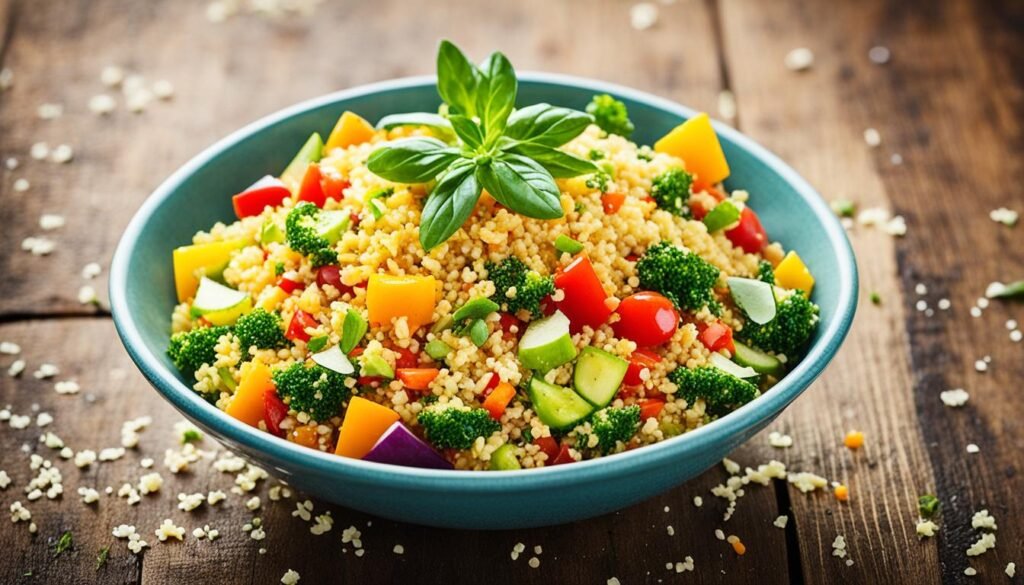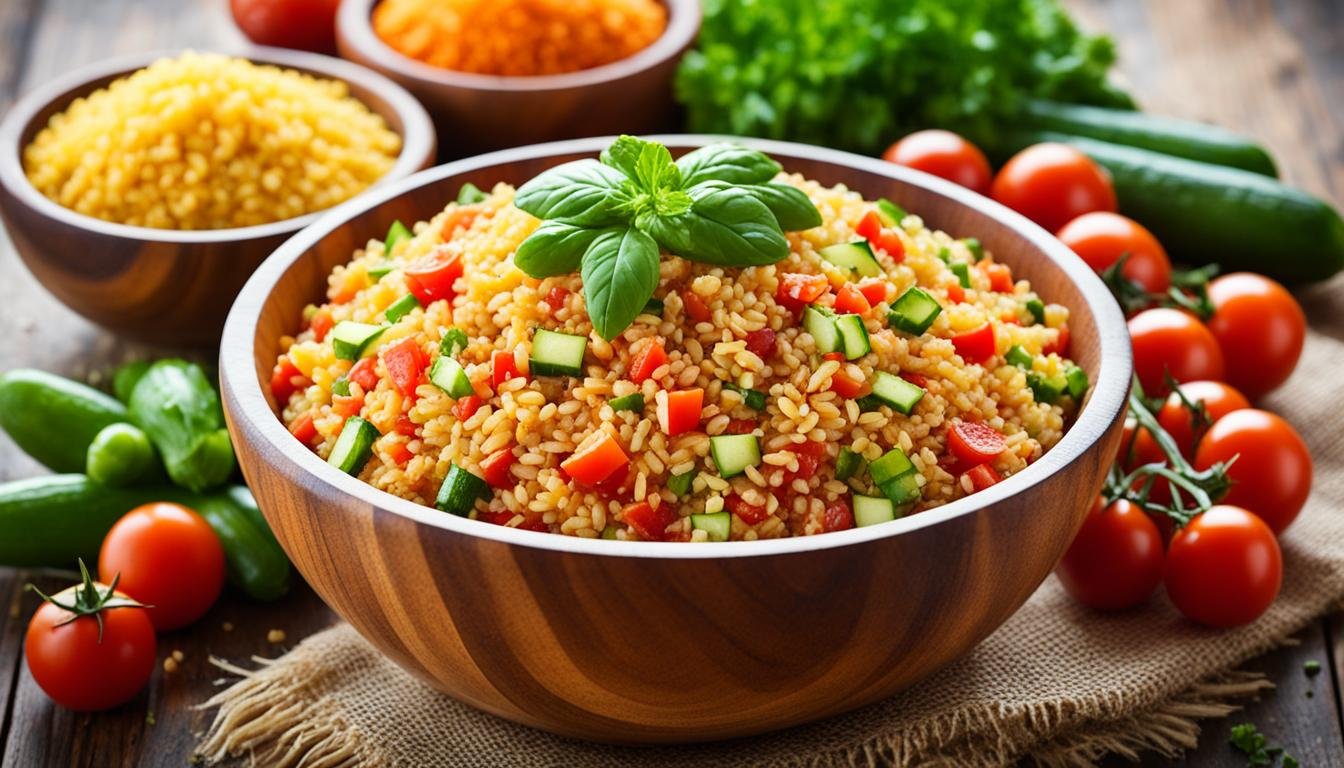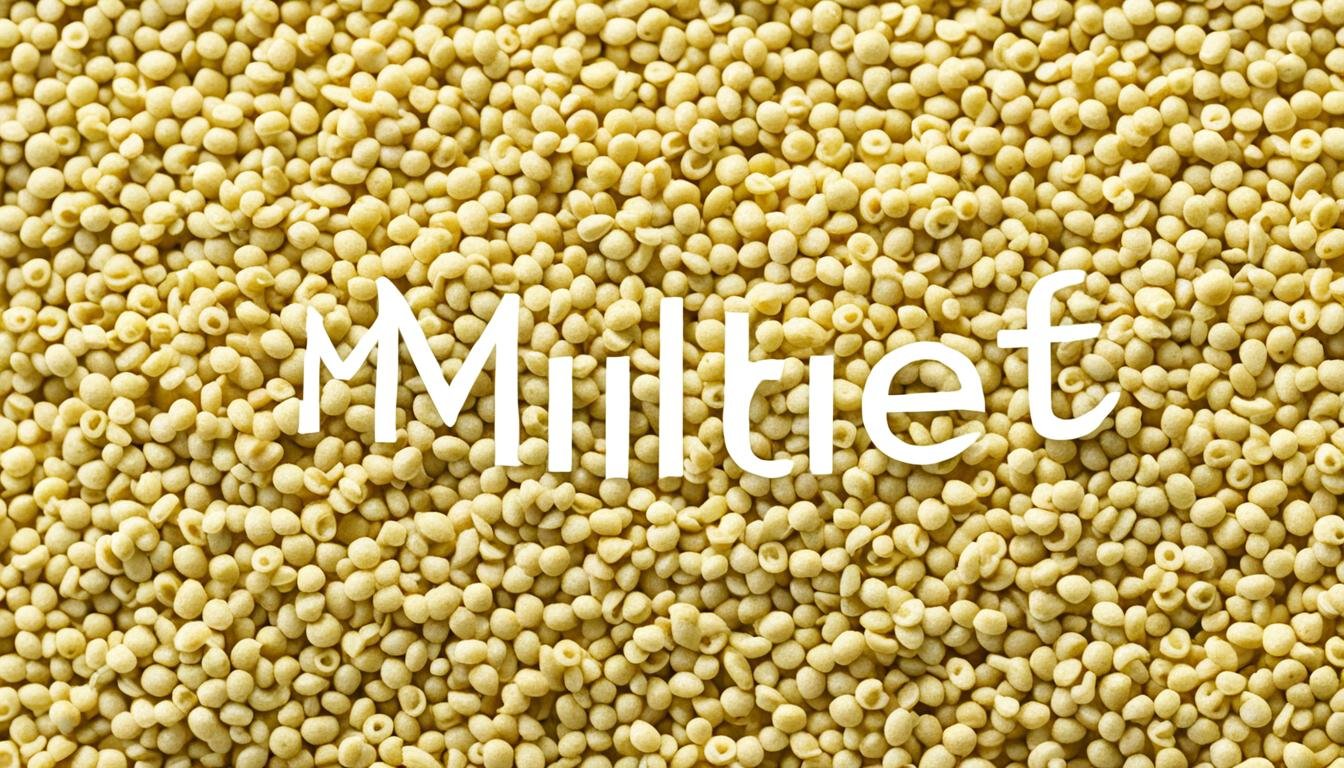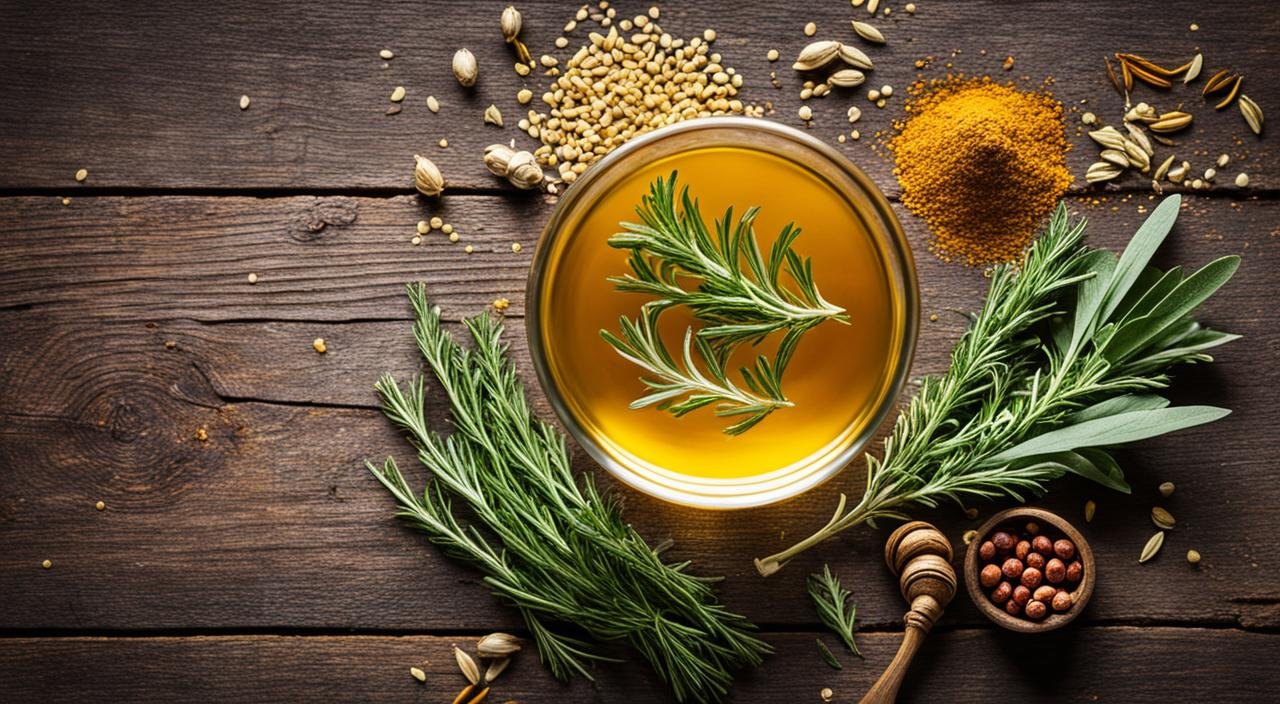Is bulgur gluten free? Learn everything about the gluten content and health benefits of this ancient whole grain. Get the healthiest facts from our comprehensive guide.
Curious about bulgur wheat being gluten-free? Ditto. We look for healthy grains that fit our diet. With many choices, it’s hard to spot the true gluten-free ones. We’ll explore bulgur’s gluten content in this article. So, get ready to make smart health decisions!
Key Takeaways
- Bulgur wheat is a nutrient-dense whole grain that can offer numerous health benefits.
- Despite its wheat-based origins, bulgur does contain gluten and is not suitable for those with celiac disease or gluten sensitivity.
- Exploring gluten-free alternatives like quinoa, sorghum, and brown rice may be a better option for those following a strict gluten-free diet.
- Incorporating bulgur into your meals can still be a delicious and nutritious choice for those who can tolerate gluten.
- Understanding the nuances of bulgur’s gluten content can help you make informed decisions about incorporating it into your dietary lifestyle.
What is Bulgur?
Bulgur is a tasty cereal grain made from cracked wheat. It is mainly from durum wheat. This makes it a healthy, whole grain choice. It has a chewy texture like couscous when cooked. And its taste is earthy and nutty.
Some may confuse it with cracked wheat because they are both from wheat. But, bulgur is precooked, dried, and then ground. Cracked wheat, on the other hand, is not.
Origin and History of Bulgur
Bulgur has been part of diets in the Middle East, Mediterranean, and West Asia for a long time. People have been eating it since the 6th century BC. It was a way to keep wheat nutritious for a long time.
How Bulgur is Made
Making bulgur includes several steps like parboiling and drying the grains. The whole wheat kernels are boiled, then dried. After this, they are cracked into small pieces. This creates the bulgur grain we see and eat.
Different Types of Bulgur
There are different types of bulgur, each used for various dishes. The main kinds are:
- Fine bulgur: It’s the smallest and used in dishes like tabbouleh.
- Medium bulgur: It’s a bit bigger, great for salads and stuffings.
- Coarse bulgur: The largest type, gives a chewy texture to foods.
- Parboiled bulgur: A quicker cooking option, because it’s pre-cooked.
Your choice of bulgur type will depend on your dish and what you like. Finer bulgur is good for salads. Coarser bulgur works well in stews and other warm meals.
- Some people think bulgur is like buckwheat.
- If you’re new to gluten-free eating, we can help.
Bulgur Nutrition Facts
Bulgur is a favorite whole grain for many. It’s high in nutrition like 151 calories, 34 grams of carbs, and 6 grams of protein in each cooked cup. Very little fat is in it. Bulgur is full of fiber and important vitamins and minerals.
Calories and Macronutrients
A 1/4 cup (40g) of bulgur has 140 calories. It offers 6 grams of fat, 30 grams of carbs, and 5 grams of protein. This shows bulgur is a healthy, low-calorie choice.
Vitamin and Mineral Content
In just one cup of bulgur, you get a lot of important nutrients. Some examples are 48% of the Daily Value for manganese and 14% for magnesium. It also has 10% for iron, 13% for pantothenic acid, and 15% for copper. Plus, you get 9% of niacin, thiamine, zinc, and folate.
Fiber in Bulgur
Bulgur is rich in fiber, with 8 grams in every cup. This is almost 30% of the Daily Value. Eating bulgur might help with keeping blood sugar balanced, caring for your heart, and making digestion smooth.
Is Bulgur Gluten Free?
As said by the third source, bulgur has gluten because it comes from wheat. So, it’s not okay for people with celiac or those sensitive to gluten. They should pick from a wide range of gluten-free whole grains, including quinoa, sorghum, and brown rice.
If you want to make gluten-free bulgur recipes, there are plenty of options. You can swap bulgur with amaranth, buckwheat, corn, millet, and gluten-free rolled oats. They all have unique good stuff for your body. These grains help keep your diet gluten-free, while keeping the flavors and texture of bulgur-based meals.
- WHOLE GRAIN: Millet is a wholesome, ancient grain that’s been widely consumed for thousands of years. It’s highly nutrit…
- HULLED: It’s also gluten free and highly alkaline, so it’s easily digestible and easy on the stomach. Living Now Organic…
- ORGANIC ANCIENT GRAIN: Millet is highly versatile and is the perfect substitute for a variety of grains, including rice …
| Grain | Gluten-Free? | Nutritional Benefits |
|---|---|---|
| Amaranth | Yes | Complete source of protein, high in iron, calcium, and fiber |
| Buckwheat | Yes | Excellent source of protein, can be used as a substitute for wheat products |
| Corn, Polenta, Grits | Yes | Entirely gluten-free, can be used in various dishes |
| Millet | Yes | Rich in minerals like magnesium and potassium, great protein source for vegan and vegetarian diets |
| Gluten-free Rolled Oats | Yes | Provide long-lasting energy and nutrition, a whole-grain cereal source of dietary fiber |
| Quinoa | Yes | Contains all nine essential amino acids, considered a superfood |
Knowing the gluten-free facts and health perks of these grains helps. People with celiac or gluten sensitivity can enjoy bulgur-based meals differently. Substituting these grains in recipes keeps meals different and good for you.

Health Benefits of Bulgur
Eating whole grains like bulgur can be really good for you. It might help prevent diseases and boost digestion. Bulgur is packed with nutrients, making it great for your health.
Bulgur and Heart Health
Whole grains, including bulgur, could be good for your heart. A study of people in Jordan looked at those who ate lots of fiber from legumes and bulgur. It found they had a lower heart disease risk. The fiber and minerals in bulgur can help lower cholesterol and blood pressure, decreasing heart problems.
Blood Sugar Control
Bulgur can help regulate blood sugar. Studies show that having two to three servings daily may lower the risk of type 2 diabetes. The fiber and complex carbs in bulgur help control blood sugar levels.
Digestive Health
Bulgur is good for your gut. Its fiber and special carbs can help your gut health. They support good bacteria, improving digestion and reducing inflammation. Eating bulgur often can boost your gut health and digestion.
Bulgur is great for many parts of your health. It can improve your heart, blood sugar, and digestion. This whole grain is an easy way to make your diet healthier.

| Nutrient | Amount per 1-cup (182g) serving | % Daily Value |
|---|---|---|
| Calories | 151 | – |
| Carbohydrates | 34g | – |
| Protein | 6g | – |
| Fat | less than 1g | – |
| Fiber | 8g | – |
| Vitamin B6 | – | 8% |
| Pantothenic acid | – | 13% |
| Manganese | – | 48% |
| Copper | – | 15% |
| Magnesium | – | 14% |
| Iron | – | 10% |
| Niacin | – | 9% |
| Thiamine | – | 9% |
| Zinc | – | 9% |
| Folate | – | 8% |
How to Cook Bulgur
Cooking tasty bulgur dishes at home is easy. Bulgur is a healthy whole grain. It comes in fine, medium, and coarse types. Each one needs different cooking times and ways. If you want to make delicious bulgur pilaf or a tasty tabbouleh, or add bulgur to other dishes, learning the basics is important.
Stovetop Method
Most people cook bulgur on the stovetop. For coarse bulgur, use 1.5 cups of water for every 1 cup of bulgur. Boil the liquid, then add the bulgur. After it boils again, lower the heat and cover. Let it simmer for 12-15 minutes until it’s soft and the water is gone. For fine or medium bulgur, 2 cups of liquid for every cup of bulgur works. Cook it for 5-10 minutes.
Microwave Method
Using the microwave is fast and easy for bulgur. Put 1 cup of bulgur and 2 cups of water or broth in a microwave-safe bowl. Cover and microwave on high for 5-7 minutes. Stir halfway through. This makes the bulgur soft and absorbs all the liquid.
Rehydration Method
There’s a method that doesn’t involve cooking, just soaking. Put the bulgur in a bowl and add water or broth to cover it. Let it soak for 30 minutes to an hour. After it becomes soft, drain the extra water. Now you can use it in your dish.
The cooking time changes with the bulgur type. Fine bulgur cooks fast, but coarse bulgur takes longer. It may take up to 25 minutes to become soft. With some practice, you’ll cook it perfectly every time.
- The information below is per-pack only
- Brought to you by Whole Foods Market
- Excellent source of fiber
Using Bulgur in Recipes
Bulgur is a main ingredient in many European and Asian foods, especially in salads and pilafs. It’s mixed with herbs, veggies, and spices for tasty, healthy meals. You can make anything from tabbouleh to veggie burgers using bulgur.
If you want to change up your pilaf or need a gluten-free option instead of couscous, bulgur is a smart choice. It cooks fast, in just 12 to 25 minutes, so it’s easy to use. You can try different types, like fine or extra coarse, to see what you like best.
Choosing foods like bulgur wheat makes our meals healthier and better for the planet. It’s good for getting more fiber, protein, and nutrients. But remember, it does have gluten, so it’s not for everyone. People on a gluten-free diet can choose other grains like quinoa, sorghum, or brown rice instead.
FAQs
Is bulgur wheat gluten-free?
No, bulgur wheat is not gluten-free. Since it’s made from wheat (primarily durum wheat), it contains gluten and is not suitable for people with celiac disease or gluten sensitivity.
What’s the difference between bulgur and cracked wheat?
While both are made from wheat, bulgur is precooked, dried, and then ground into pieces. Cracked wheat, on the other hand, is raw wheat that has simply been cracked into smaller pieces without pre-cooking.
How long does bulgur take to cook?
Cooking time varies by type: fine bulgur takes 5-10 minutes, while coarse bulgur needs 12-15 minutes. You can also rehydrate bulgur by soaking it in water for 30 minutes to an hour without cooking.
What are the main health benefits of bulgur?
Bulgur is rich in fiber (8g per cup), supports heart health, helps control blood sugar levels, and promotes digestive health. It’s also packed with nutrients like manganese, magnesium, iron, and B vitamins.
What can I substitute for bulgur if I need gluten-free options?
Good gluten-free alternatives include quinoa, amaranth, buckwheat, millet, brown rice, sorghum, and gluten-free rolled oats. These grains can be used in similar recipes while maintaining nutritional benefits.
I’m Dr. Shivani, a Kolkata-based nutritionist since 2015. After 10 years of igniting a love for healthy eating in young minds as a High School nutritionist teacher, I now help individuals unlock their full potential through personalized diet plans. My passion for writing and sharing nutrition knowledge (through blogs and observations) keeps my practice fresh and fuels my love for the field!









